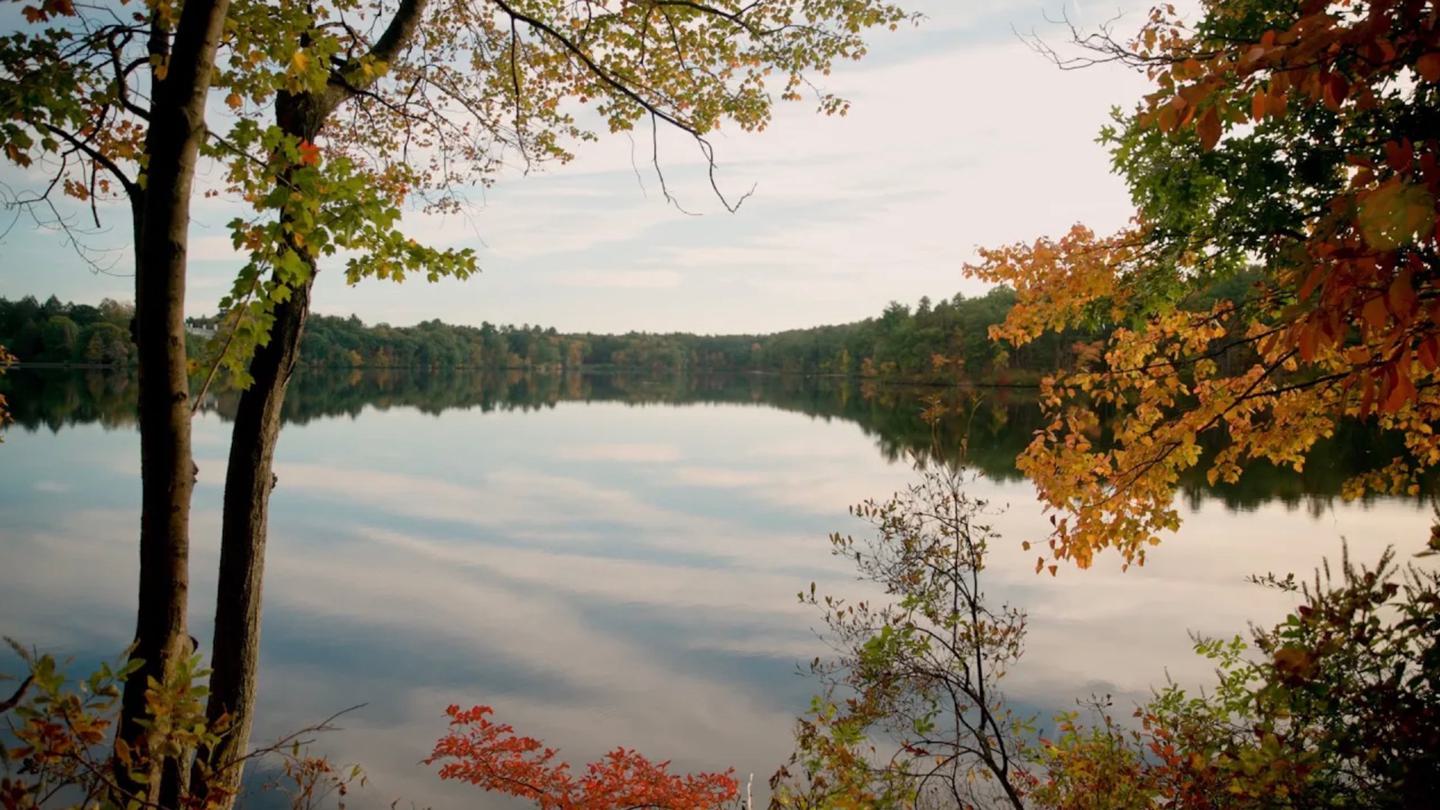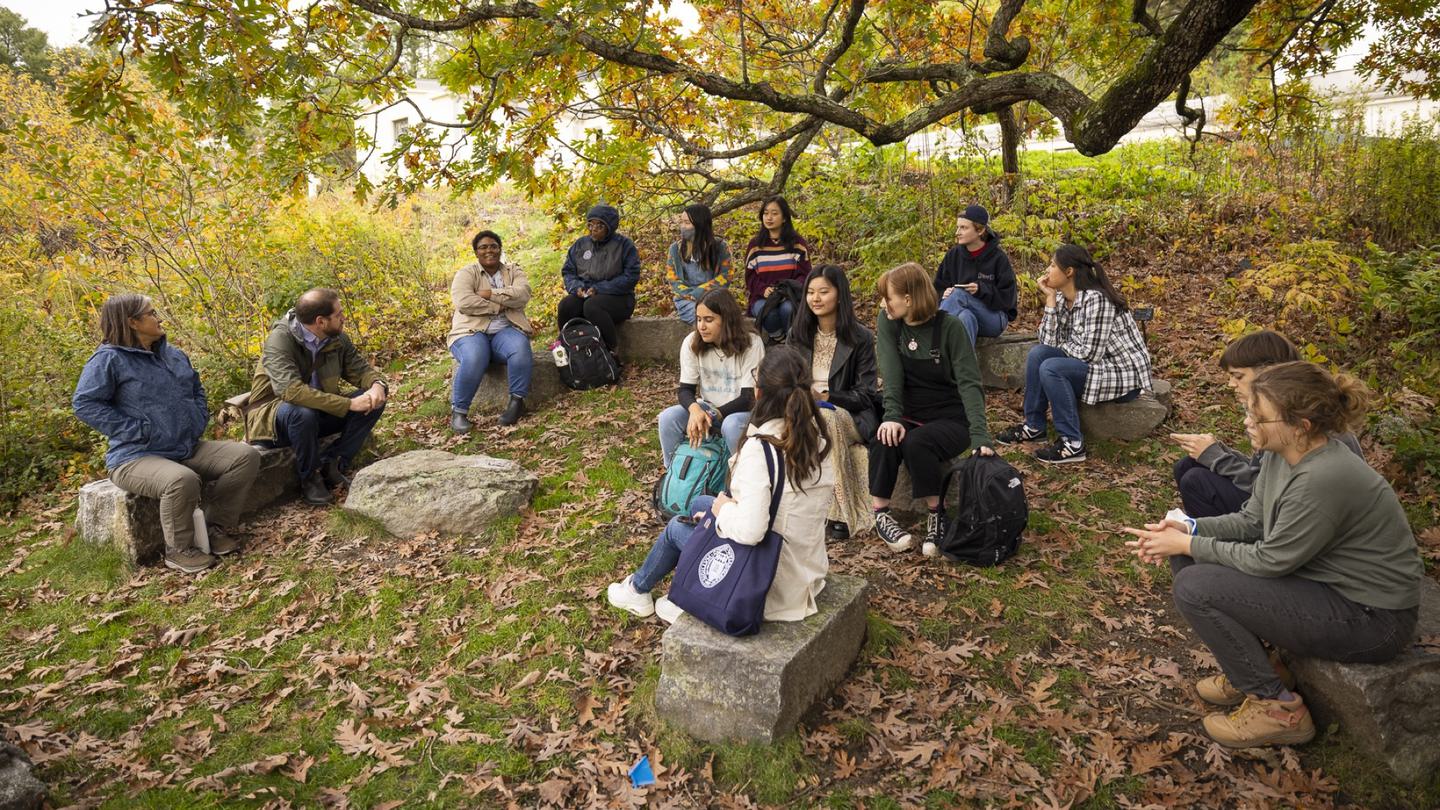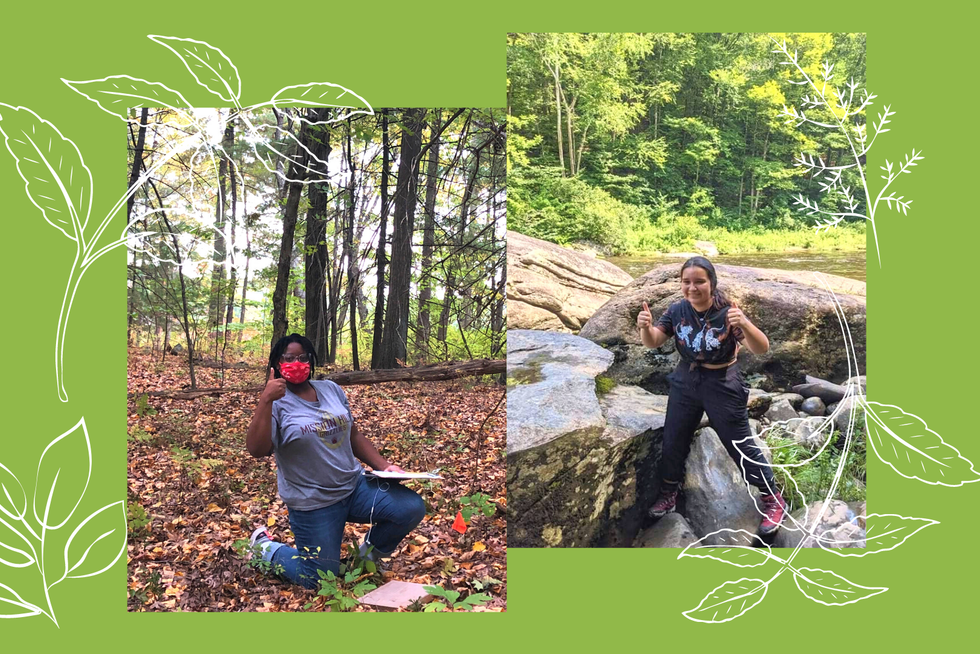At Wellesley College, we live, learn, and find inspiration on one of the country’s most beautiful campuses.
Located near Boston, Massachusetts, Wellesley’s 500 acres include a lake, public gardens, groves of conifers and hardwoods, and winding paths through open meadows. Blending with the landscape, its buildings offer a rich variety of architectural styles, from classical Gothic to bold modernist and beyond. Almost every window on campus features vistas through pine trees to the shores of Lake Waban, or down sweeping lawns to century-old oaks with magnificent gnarled branches.
Landscape architect Frederick Law Olmsted, Jr., whose vision informed our campus, described Wellesley in 1902 as “not merely beautiful, but with a marked individual character not represented so far as I know on the ground of any other college in the country.”
watch A Sense of Place

The Paulson Initiative
Our campus is also a living laboratory. Through the Paulson Ecology of Place Initiative, it becomes a key element in teaching and learning, inspiring and preparing students to make a positive ecological difference in the world. We use the landscape to connect students to campus flora and fauna and to the natural rhythms of life outdoors.
Wellesley is a place of inspiration and beauty, for students and for our community.
Wellesley College land acknowledgment
We recognize the many Indigenous peoples who have rich histories on this land, and we acknowledge the many Indigenous people who live, work, and study at Wellesley and in Massachusetts. Our land acknowledgment recognizes the long history of racism and oppression in the United States and strives to uplift the contemporary lives of Indigenous peoples.
We acknowledge that Wellesley College is built on ancestral and traditional land of the Massachusett people. We also recognize that the United States’ removal, termination, and assimilation policies and practices resulted in the forced settlement of Indigenous lands and the attempted erasure of Indigenous cultures and languages. We further acknowledge the oppression, injustices, and discrimination that Indigenous people have endured, and that there is much work to be done on the important journey to reconciliation. We commit to strengthen our understanding of the history and contemporary lives of Indigenous peoples and to steward this land.
We further recognize the many Indigenous people living here today—including the Massachusett, Wampanoag, and Nipmuc nations—who have rich ancestral histories in Wellesley and its surrounding communities. Today, their descendants remind us that they are still here, where they maintain a vital and visible presence. We honor and respect the enduring relationship between these peoples and this land, as well as the strength of Indigenous culture and knowledge, the continued existence of tribal sovereignty, and the principle of tribal self-determination.



